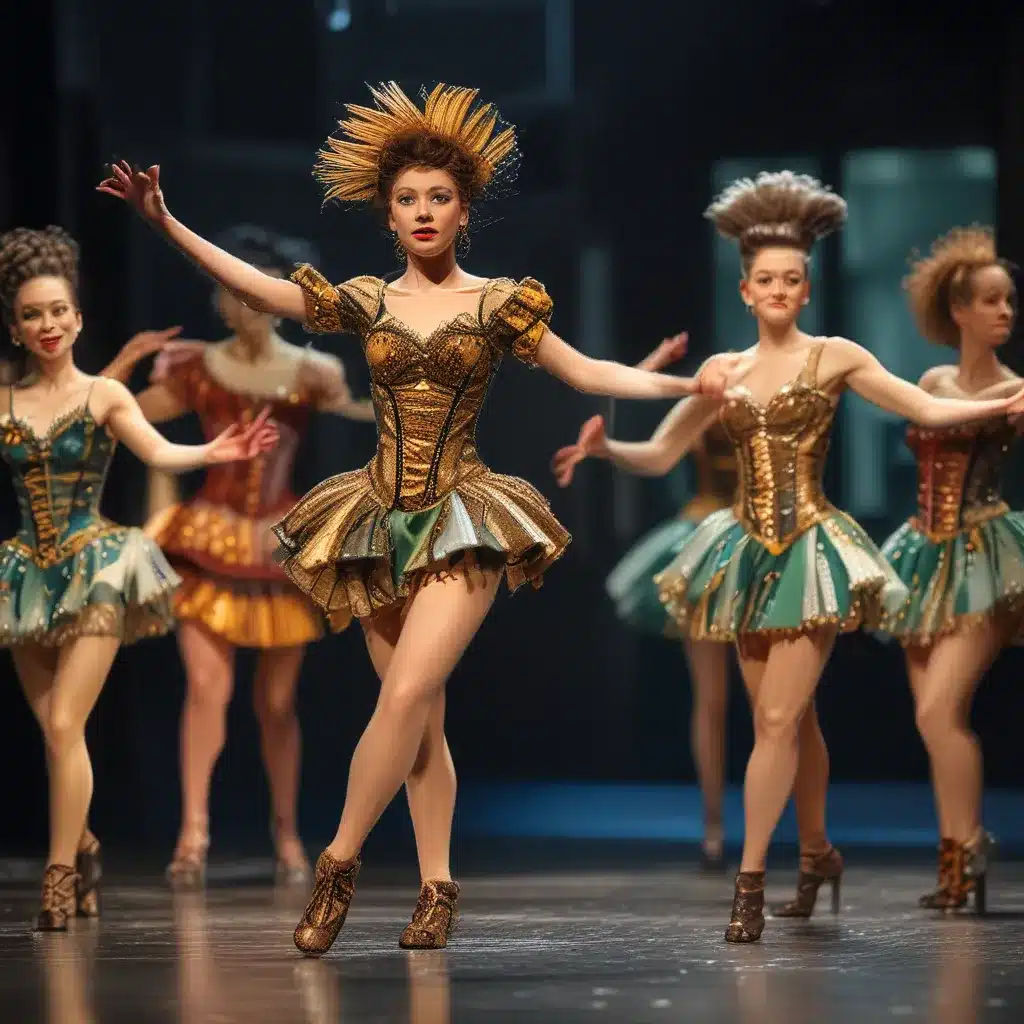
As a self-proclaimed theater nerd, I’ve always been captivated by the magic that happens behind the scenes of a musical production. From the sweeping melodies that transport us to another world to the awe-inspiring choreography that leaves us on the edge of our seats, there’s something truly special about the art of musical theater. But if you ask me, one of the most underappreciated elements of this enchanting art form is the innovative costume design that brings the characters to life.
The Evolving Role of Costume Design
Gone are the days when costumes were simply a means to cover the actors’ bodies and adhere to the period setting. In today’s contemporary musicals, costume designers have elevated their craft to new heights, using fashion as a powerful storytelling tool. They’re no longer just dressing the actors – they’re crafting visual representations of the characters’ emotions, motivations, and even their innermost desires.
Take, for example, the critically acclaimed musical Mean Girls. The vibrant, trend-conscious costumes designed by the talented Gregg Barnes not only capture the essence of high school clique culture, but they also serve as a subtle commentary on the pressures faced by young women to conform to societal norms. The pastel-hued ensembles of the “Plastics” group, with their perfectly coiffed hair and impeccable makeup, create an almost cartoonish, exaggerated image of feminine perfection, while the more subdued, individualistic styles of the protagonist Cady Heron and her friends symbolize their rejection of that artificial ideal.
Costume as Character Development
But it’s not just the visual impact of the costumes that makes them so essential to the modern musical; it’s the way they contribute to the overall character development and arc. In the recent revival of Hedwig and the Angry Inch, for instance, the protagonist’s ever-evolving wardrobe serves as a physical manifestation of their journey of self-discovery and gender identity. As Hedwig navigates the complexities of their life, their costume choices reflect the shifting nature of their sense of self, from the conservative, androgynous look of their early days to the increasingly bold and flamboyant attire that ultimately becomes a symbol of their hard-won confidence and acceptance.
It’s a similar story in the case of the Regency-era musical Pride and Prejudice, where costume designer Natalie Pryce’s meticulously crafted ensembles not only transport the audience to the elegant ballrooms of 19th-century England but also provide insights into the characters’ social status, personal style, and even their innermost thoughts and feelings. The prim and proper gowns of the Bennet sisters, for instance, reflect their adherence to societal expectations, while the more daring and unconventional attire of Elizabeth Bennet hints at her independent spirit and refusal to conform.
The Art of Collaboration
But of course, the true magic of costume design in contemporary musicals doesn’t happen in a vacuum. It’s the result of a collaborative effort between the designer, the director, the choreographer, and the actors themselves, all working together to create a cohesive and compelling visual narrative.
As actor Michael Place eloquently puts it, “Understanding drag and that culture is a brand new experience for me. The tone and the vocabulary of that world is something that you don’t want to falsify – you don’t want to do the stereotype, but you kind of want to do the stereotype, so it lives someplace between archetype and stereotype.”
It’s this delicate balance, this constant negotiation between authenticity and exaggeration, that makes costume design in modern musicals such a fascinating and multifaceted art form. And the best designers, the true visionaries, are the ones who can seamlessly weave together all these disparate elements – character, narrative, movement, and cultural context – into a cohesive, breathtaking whole.
Pushing the Boundaries of Tradition
Of course, not all costume designers in the world of contemporary musicals are content to simply play within the boundaries of tradition. There are those who are actively pushing the envelope, challenging the conventions of what costume design can and should be.
Take, for instance, the work of designer Paul Tazewell, whose innovative costumes for Hamilton have become as much a part of the show’s cultural legacy as the groundbreaking music and lyrics. By blending elements of 18th-century fashion with modern streetwear, Tazewell has created a visual language that not only reflects the diverse, multicultural cast but also serves as a powerful commentary on the enduring relevance of the American Revolution in our modern era.
Or consider the mind-bending creations of Toni-Leslie James, whose costumes for the recent revival of Oklahoma! have been hailed as a radical reinvention of the classic musical. Eschewing the traditional cowboy boots and prairie dresses, James has crafted a bold, avant-garde aesthetic that subverts the audience’s expectations and forces them to confront the darker, more unsettling themes lurking beneath the show’s seemingly bucolic surface.
The Future of Costume Design
As I look to the future of costume design in contemporary musicals, I can’t help but feel a sense of excitement and anticipation. With the continued evolution of the art form and the emergence of a new generation of visionary designers, the possibilities are truly endless.
Perhaps we’ll see even more boundary-pushing, genre-blending creations that challenge our notions of what a “musical theater costume” can be. Or maybe we’ll witness a deeper exploration of the intersection between fashion, identity, and social commentary, with costumes becoming an even more integral part of the storytelling process.
Whatever the future may hold, one thing is certain: the role of costume design in contemporary musicals is only going to become more vital, more innovative, and more captivating. And as a lifelong theater enthusiast, I can’t wait to see what the fashion-forward footlights have in store for us next.

